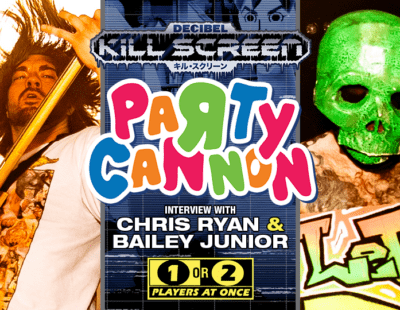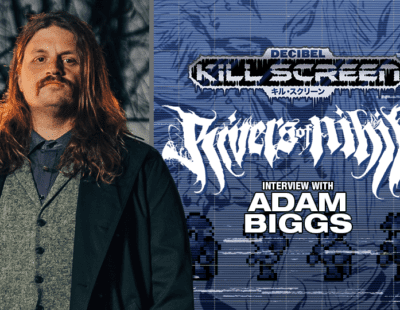More than we can count, our Hall of Fame articles run over the specified word count. This is largely due to the rapport we have with artists, our tireless need to wear out our interviewees with question after question, or the group in question have a lot to say about the record slated for induction.
For Saxon‘s Wheels of Steel [February 2017, #148] interviews, we were able to gather all five original members. As required by Hall of Fame edict #1. The current and former members of Britain’s heavy metal legends couldn’t have been nicer and more talkative. Graham, Steve, Biff, Pete, and Paul spun all kinds of fun and interesting stories about the events leading up to landmark album Wheels of Steel and what happened shortly thereafter.
To that end, we were forced to cut a good portion of the Saxon piece to allow for space. So, in the spirit of Christmas (merry or unmerry; giving or ungiving) and to celebrate Wheels of Steel hitting the Hall (finally, right?!), we bring you some cool chats from the cutting room floor.
Do you remember which songs came first?
Biff Byford: “Motorcycle Man” was already written. “Wheels of Steel” and “747”, I think, were the first songs we wrote while we were at the farm house in Wales.
Pete Gill: I think it was “Wheels of Steel”. We had a big American car that we traveled in. One time we were stopped by the police on one of bridges just outside the Houses of Parliament. They took us out, stripped searched us, and turned the car over. The cop said, “We’re looking for drugs.” I said to him, “The only speed we use is our car.” Biff used that line for the song “Strong Arm of the Law”.
Graham Oliver: Before we went to Wales, we had, more or less, ready: “See the Light Shining”, “Freeway Mad”, “Motorcycle Man”, and “Street Fighting Gang”. The new songs were “747”, “Wheels of Steel”, “Suzie Hold On”, and “Machine Gun”.
Do you feel Wheels of Steel gave Saxon direction, both musically and aesthetically?
Steve Dawson: By the time we were making Wheels of Steel, we were a complete band. The band had formed from two separate bands that were very different. Biff and Paul’s band were more like a prog rock band. They liked Yes, Genesis, and things like that. They were more musical than my band [SOB]. We listened to Cream, Free, Jimi Hendrix, Pink Floyd, and all that. Graham and myself were more immature musicians. We liked bands that played simpler music, blues-based. Graham and myself were never in bands that played other peoples’ songs. We always wrote our own songs, which can limit you as a musician, but doesn’t distract you from writing music. So, agreed, we were thinking more along similar lines when we wrote Wheels of Steel.
Lyrically, what were you guys after? The lyrics were more than the usual fantasy of sex, drugs, and rock ‘n’ roll.
Paul Quinn: Well, we were really into American cars, which is why we bought quite a few of them over the years. They were a better buy for the money, and they were built for long distances. We’d run them ‘til the oil had run out. [Laughs] Anyway, “Wheels of Steel” is about a Chevrolet Malibu, which could get in six people. Most British cars you could get, at maximum, five people in. [Laughs]
Did Carrere know what they had with Saxon or were you just another signing?
Steve Dawson: We had been offered shit deals with other record labels. Carrere offered us a three-album deal. We wanted to make albums not singles. Freddie Cannon was the head of Harvest, an EMI label. He left Harvest on an offer from Claude Carrere, who wanted a London-based office. Freddie had offered us a two-single deal with Harvest before. When Freddie got to Carrere, he remembered our demos and got in touch, offering us a deal. We were the only rock band on Carrere at the time. Maybe there was one more, a band called Stingray from South Africa.
What was Top of the Pops like?
Pete Gill: Well, it was us and right after us, on the same bill, was Judas Priest doing “Living after Midnight”. Primarily, Top of the Pops is a pop show and it reflects on the charts. At that particular time, only rock bands like Deep Purple and Led Zeppelin would get into the charts. Not the singles charts, but the album charts. When the New Wave of Heavy Metal arrived, it turned into singles-based entries. I must say by this time, there were more females getting into heavy metal. Listen to Judas Priest playing “Exciter” and then “Living after Midnight” or “Breaking the Law”. The songs on British Steel were more accessible to a wider audience.
** The February 2017 [#148] issue of Decibel, with the full Saxon Wheels of Steel Hall of Fame, is available now for order [HERE].







